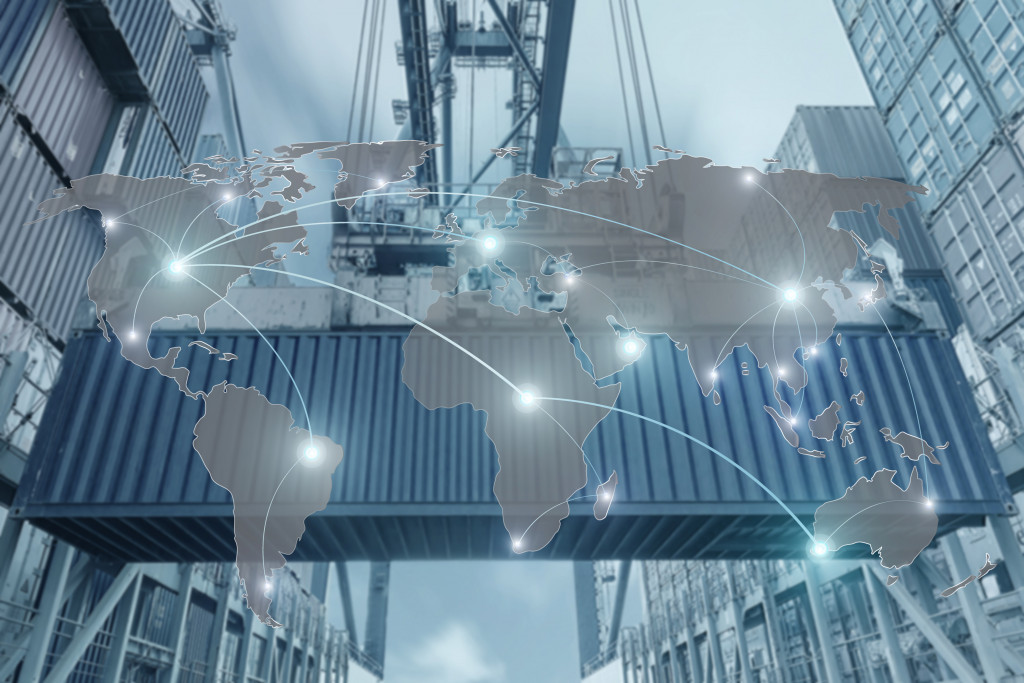- Leverage modern technologies to streamline logistics operations.
- TMS can reduce costs, improve transparency and increase efficiency in transportation operations.
- WMS optimizes storage and automates workflows for warehouses, while IoT & RFID tech can improve supply chain visibility and reduce cargo theft.
- GPS shipment tracking allows companies to monitor the progress of their cargo in real-time, while Big Data analytics helps identify trends and forecast demand.
- AI technology can automate processes such as order processing, route optimization, and carrier selection for improved efficiency.
In this modern-day world, businesses have become more complicated than ever before. One major challenge that companies face is transportation and logistics. The supply chain management process can be stressful, time-consuming, and even costly. But now, thanks to modern technology, businesses can streamline their logistics operations and ensure efficient transportation of goods and services to their customers. Here are some examples.
Utilizing Transportation Management Systems:
The first and most important way to ensure efficient logistics in your business is by using a Transportation Management System (TMS). A TMS is a software application that helps companies to manage their transportation operations.
This application can handle different transportation modes, automate order routing, perform real-time tracking, and manage carrier communication. With the help of a TMS, companies can save on costs, reduce manual errors, improve transparency, and increase efficiency in their transportation operations.
In some cases, the application can even integrate with Business Intelligence tools to provide detailed data-driven insights into transportation operations and customer delivery.

Implementing Tech in Warehouses & Inventory:
Another way to ensure efficient logistics is by implementing modern technology into warehouses and inventory systems. By using automation and intelligent algorithms, businesses can easily track the movement of goods within a warehouse. This helps them save time and money by avoiding manual errors in inventory management. Here are some real-world applications:
Warehouse Management Systems:
A Warehouse Management System (WMS) is designed to control and optimize the various processes that take place in a warehouse. It helps to manage inventory levels, improve pick-and-pack accuracy, maximize storage, and automate workflows. With a WMS in place, companies can experience better transparency, faster order processing, and overall improved warehouse efficiency.
IoT Sensors and RFID Technology:
The use of IoT sensors and RFID technology is transforming the way businesses manage their logistics. IoT sensors can be placed on shipping containers, trucks, and other transportation assets to monitor and track their condition and location in real-time.
This technology helps to improve supply chain visibility, increase transparency, and reduce the risk of cargo theft. RFID technology, on the other hand, can help companies track their inventory in real time and provide a more accurate view of stock levels.
GPS Shipment Tracking:
Businesses can also ensure efficient logistics by utilizing accurate GPS shipment tracking technology. This allows companies to monitor the progress of their cargo in real-time and improve visibility into their supply chain operations. By having access to detailed insights on delivery schedules, transit times, and location data, businesses can optimize their transportation processes with ease.
Big Data Analytics:
Big data analytics is another essential technology that companies can use to ensure efficient logistics. Big data analytics is a process of analyzing large data sets to uncover patterns and insights.
This technology can help businesses identify trends, forecast demand, optimize routes, and reduce operational costs. By analyzing data from different systems such as TMS, WMS, and IoT sensors, companies can better understand their supply chain performance and make informed decisions to improve their operational efficiency.

Artificial Intelligence:
Lastly, Artificial Intelligence (AI) is an emerging technology that can revolutionize the logistics industry. AI technology can help businesses automate different processes, such as order processing, route optimization, and carrier selection.
By using AI technology, businesses can increase their overall efficiency, reduce operational costs, and improve customer service. AI can also help companies forecast demand, optimize inventory levels, and predict supply chain disruptions.
If possible, integrating all these technologies into an enterprise-wide system can help businesses create a connected and efficient supply chain. Furthermore, companies should also consider outsourcing their transportation operations to third-party logistics providers. Third-party logistics providers can offer the most cost-effective and efficient solution for transportation and distribution, helping companies reduce costs and optimize performance.
Logistics operations can be a significant challenge for any business. But by leveraging various modern technologies such as Transportation Management Systems, Warehouse Management Systems, IoT sensors, RFID technology, Big Data Analytics, and Artificial Intelligence, companies can streamline their logistics operations, reduce costs, increase efficiency, and improve overall customer service. While implementing these technologies can require an initial investment, they are a worthwhile investment for businesses looking to get ahead in today’s fast-paced market. By utilizing modern technology, companies can ensure that their logistics operations are efficient, reliable, and always running at peak performance levels.
